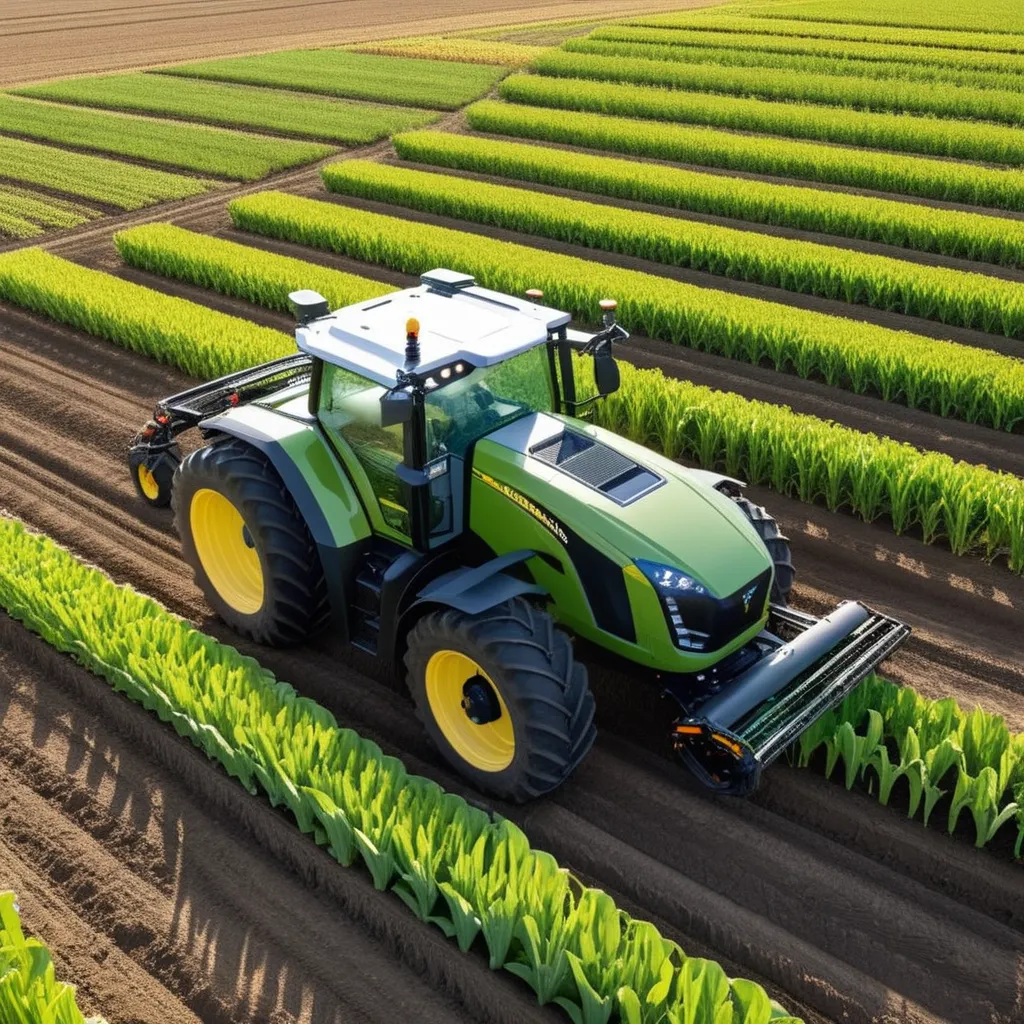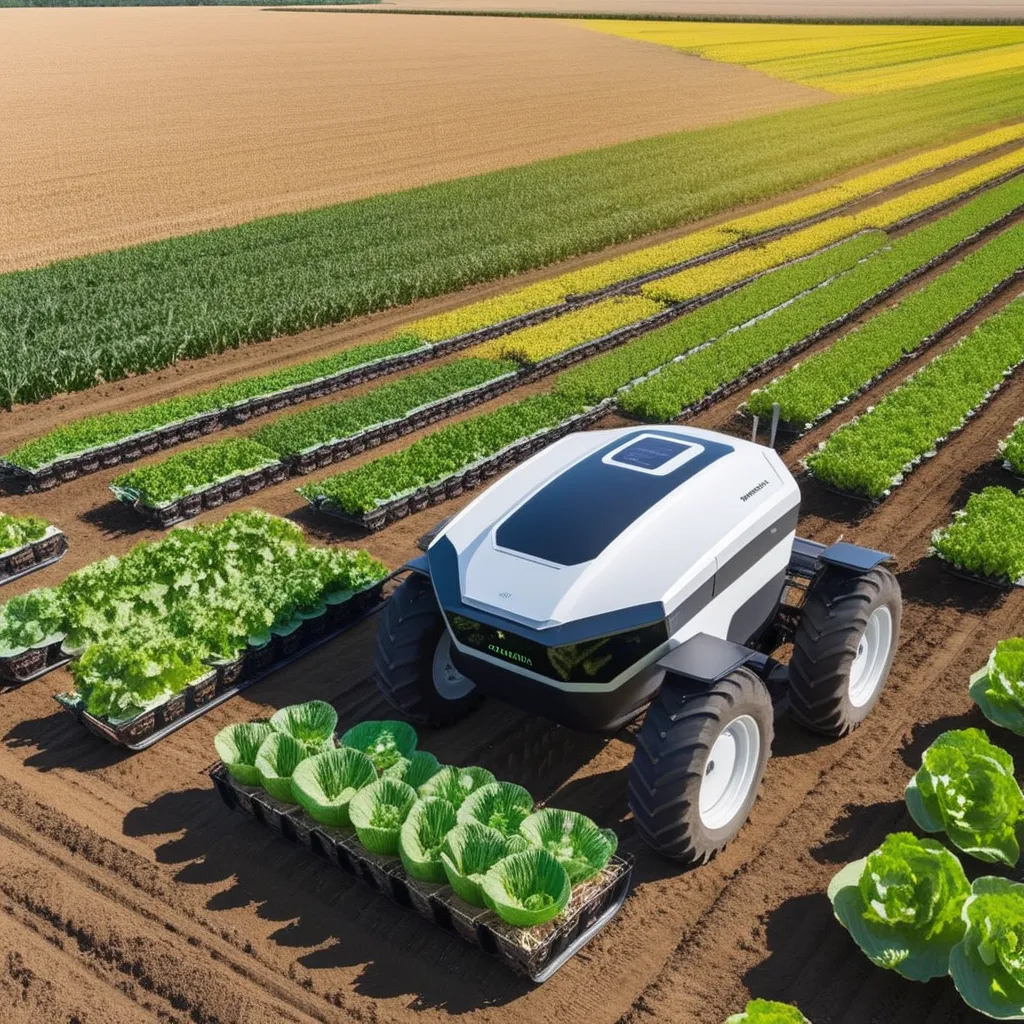The Evolution of Autonomous Farming Technology
As a child, I often visited my grandparents' farm during the summer. Those memories of running through fields, picking fresh vegetables, and chasing chickens are etched in my mind. Fast forward to today, and farming has evolved dramatically, thanks to autonomous farming technology. In this article, we'll explore how these innovations are revolutionizing agriculture.

A Walk Down Memory Lane
My grandfather, a seasoned farmer, used to say that farming was both a science and an art. Back then, it was a labor-intensive process. The fields required constant attention, and harvesting was a back-breaking job. I remember how everyone in the family came together during the harvest season, and it was a time of hard work and camaraderie.
1. The Traditional Farming Methods
Traditional farming involved manual labor, plowing fields with horses, and planting rows upon rows of crops by hand. It was a livelihood that demanded grit and resilience. My grandfather would often regale us with stories of how they relied on their instincts to gauge the weather and predict crop yields.
The Farming Revolution
2. The Rise of Technology
The world of farming has come a long way since my childhood days on the farm. The advent of autonomous farming technology has transformed agriculture into a high-tech industry. These innovations have significantly increased efficiency and productivity, allowing farmers to produce more with less.
3. Precision Agriculture
One of the cornerstones of autonomous farming is precision agriculture. This practice involves using data, sensors, and GPS technology to optimize every aspect of farming, from planting to harvesting. It's like giving each plant a personalized care plan.
4. The Role of Robotics
Robots have become a common sight on modern farms. These intelligent machines can perform a wide range of tasks, from planting seeds with pinpoint accuracy to harvesting crops at the peak of ripeness. They work tirelessly day and night, ensuring that no harvest is left behind.
5. Drones in Agriculture
Drones have taken to the skies, serving as "eyes in the sky" for farmers. They capture high-resolution images of fields, helping identify areas that may need special attention, such as irrigation or pest control. Drones provide a bird's-eye view that can save both time and resources.
The Benefits of Autonomous Farming
6. Increased Efficiency
Autonomous farming technologies have led to a significant increase in efficiency. Tasks that once took days can now be completed in hours. This efficiency allows farmers to make the most of their resources and reduce waste.
7. Conservation of Resources
Precision agriculture reduces the need for excessive use of water, pesticides, and fertilizers. This not only conserves valuable resources but also has a positive impact on the environment by reducing pollution and soil degradation.
8. Improved Crop Yields
By optimizing planting and harvesting processes, autonomous farming has led to improved crop yields. This is a boon for both farmers and consumers, ensuring a more stable food supply and potentially lower prices.
9. Safety for Farmers
Automation reduces the need for manual labor in harsh conditions. Farmers can now focus on managing their farms and making informed decisions without putting their health at risk.
The Future of Autonomous Farming
10. AI and Machine Learning
The future of autonomous farming holds exciting possibilities. Artificial intelligence and machine learning will continue to play a significant role in making farming even more efficient and sustainable. These technologies can predict crop diseases, monitor soil health, and even automate the decision-making process.
11. Sustainability
Sustainability is a growing concern in agriculture. Autonomous farming can contribute to sustainable practices by minimizing waste, conserving resources, and reducing the carbon footprint of farming operations.

In Conclusion
As I look back on my childhood memories of farming with my grandparents, I can't help but marvel at how far we've come. Autonomous farming technology has revolutionized an age-old industry, making it more efficient, sustainable, and productive.
The transition from manual labor to autonomous farming has been nothing short of remarkable. It's a testament to human ingenuity and our ability to adapt and embrace innovation. As we move forward, it's clear that the future of farming is inextricably linked with technology, and I can't wait to see what the next harvest season will bring.

No comments:
Post a Comment